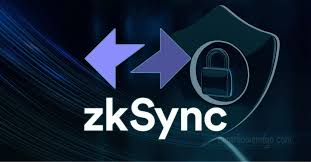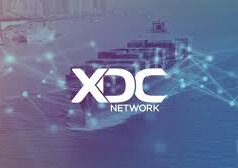The blockchain world moves fast, and Ethereum, despite its dominance, has long grappled with high fees and sluggish transaction speeds. Enter ZKSync, a Layer 2 scaling solution that’s not just solving these pain points but redefining what’s possible with its innovative approach. Launched by Matter Labs in 2020, ZKSync is making waves with its zero-knowledge rollup (ZK-rollup) technology, user-friendly features, and a vision for a hyper-scalable, decentralized future. Let’s dive into what makes ZKSync unique and why it’s a game-changer for Ethereum and beyond.
What Is ZKSync?
At its core, ZKSync is a Layer 2 protocol built to supercharge Ethereum’s scalability while keeping its security and decentralization intact. It uses ZK-rollups, a technology that bundles thousands of transactions off-chain, verifies them with a single cryptographic proof, and submits that proof to Ethereum’s mainnet. The result? Lightning-fast transactions, dirt-cheap fees, and the same rock-solid security as Ethereum itself.
But ZKSync isn’t just another rollup. Its ecosystem, now branded as ZKSync Era, is packed with features that set it apart from competitors like Optimism, Arbitrum, or even other ZK-rollup projects like Polygon zkEVM. From native account abstraction to its Elastic Chain vision, ZKSync is pushing boundaries in ways that excite developers, users, and institutions alike.
Why ZKSync Stands Out
Here’s a closer look at what makes ZKSync unique, drawing from its innovative tech stack and recent developments:
1. Zero-Knowledge Rollups: Speed, Savings, and Security
ZKSync’s backbone is its ZK-rollup technology, which uses zero-knowledge proofs (ZKPs) to validate transactions off-chain while anchoring them to Ethereum. Unlike optimistic rollups, which assume transactions are valid and rely on fraud proofs (introducing delays), ZKSync’s ZKPs provide instant finality. This means transactions are confirmed faster, with no waiting period for disputes.
The numbers speak for themselves: ZKSync can process over 2,000 transactions per second (TPS), with fees often less than a penny—compared to Ethereum’s mainnet, where gas fees can spike to $20 or more during peak times. Plus, ZKPs keep transaction details private, adding a layer of confidentiality that’s a big win for privacy-conscious users.
2. Native Account Abstraction: A Game-Changer for Usability
One of ZKSync’s standout features is its native support for account abstraction (AA). Unlike traditional Ethereum accounts, which require complex seed phrases and private keys, AA turns every wallet into a smart contract with customizable logic. This makes crypto more user-friendly by enabling features like:
- Seedless onboarding: Users can log in with FaceID or Passkeys, reducing the risk of hacks and making crypto accessible to non-techies.
- Flexible fee payments: Pay gas fees in any token (e.g., stablecoins like USDT), not just ETH, thanks to Paymasters. This removes a major friction point for new users.
- Social recovery: Lost your key? Recover your wallet through trusted contacts, not a 12-word phrase you scribbled on a napkin.
X posts from users like @0xCygaar praise ZKSync’s AA as a “huge” step toward making crypto secure and easy for everyone, setting it apart from other Layer 2s that lack native AA.
3. The Elastic Chain: A Network of Interoperable Blockchains
ZKSync’s vision goes beyond a single rollup. Its Elastic Network, introduced in 2024, is a framework of interconnected ZK Chains—customizable Layer 2 or Layer 3 blockchains that share liquidity and infrastructure. Think of it as a “chain of chains” where each blockchain can be tailored for specific use cases (e.g., gaming, DeFi, or enterprise solutions) while remaining seamlessly interoperable.
The Elastic Network uses Hyperbridges and the ZK Router to enable trustless communication and asset transfers without relying on Ethereum’s Layer 1 for every transaction. This tackles blockchain fragmentation—a major hurdle for Web3 adoption—by unifying liquidity and user experience across chains. The launch of Cronos zkEVM’s alpha mainnet in August 2024, built on ZKSync’s tech, shows this vision in action.
4. EVM Compatibility with a Twist
ZKSync Era is fully compatible with Ethereum’s Virtual Machine (EVM), meaning developers can port their Ethereum dApps with minimal changes, using familiar tools like Solidity. But ZKSync takes it further with its zkEVM, optimized for zero-knowledge proofs. Unlike other zkEVMs (e.g., Polygon or Scroll), ZKSync’s design prioritizes performance with features like:
- LLVM-based compiler: Reduces stack issues and boosts efficiency for smart contract execution.
- State diffs: Only changes in blockchain state are sent to Ethereum, slashing data costs compared to other rollups.
This makes ZKSync a developer’s dream, with over 100 projects already live, including Curve, Yearn Finance, and ZigZag DEX.
5. User-Centric Design and Low Fees
ZKSync’s focus on user experience (UX) is unmatched. Its one-tap onboarding via FaceID/Passkeys eliminates the clunky seed phrase process, while wallets like Argent make accessing the ecosystem a breeze. Gas fees are a fraction of Ethereum’s, often costing less than $0.01, thanks to optimizations like data compression and the Redshift proof system.
For example, transferring stablecoins or trading NFTs on ZKSync is dirt-cheap, making it ideal for microtransactions, DeFi, and gaming. The ZigZag DEX, built on ZKSync, lets users trade without gas fees, a feature traders on X have called a “game-changer.”
6. Decentralized Governance and Community Power
ZKSync’s governance model empowers its community through ZK token holders, who can vote on proposals or delegate voting power. With a 3-day voting delay, 7-day voting period, and a 630M ZK token quorum, the system ensures fair decision-making. The introduction of a Security Council and Guardians in 2024 adds checks and balances, like a 3-day veto period for controversial upgrades.
This decentralized approach, combined with a community-focused airdrop in June 2024 (33% of ZK tokens went to ecosystem users), has fueled engagement. However, a hack in April 2024, where 111.8M ZK tokens were stolen from an airdrop admin account, highlighted the need for robust security—a challenge ZKSync is actively addressing.
7. Institutional Appeal and the Future of Tokenization
ZKSync’s Elastic Network is catching the eye of big players like Deutsche Bank and Blockchain Capital, who see its privacy and compliance features as ideal for tokenized assets. The ZK Router and Gateway enable customizable, secure blockchains for enterprises, addressing privacy and regulatory needs that public networks often lack. X posts from @Securitize call ZKSync a “pioneer” in this space, predicting it will drive institutional adoption in 2025.
The Bigger Picture
ZKSync’s unique blend of speed, low costs, and user-friendly features positions it as a leader in Ethereum’s Layer 2 race. Its Elastic Network vision tackles fragmentation, making it easier for developers and users to navigate Web3. With over $115 million bridged to its mainnet in just 10 days after its 2023 launch and a market cap of $676 million by Q4 2024, ZKSync’s growth is undeniable.
But it’s not all smooth sailing. Challenges like EVM compatibility complexities and the computational intensity of generating ZKPs can cause hiccups. The 2024 airdrop hack also raised concerns, though ZKSync’s quick response and open-source ethos show its commitment to resilience.
How This Changes Things
ZKSync isn’t just scaling Ethereum—it’s reimagining how blockchains can work for everyone. Its low fees and fast transactions make DeFi and NFTs accessible to millions, while features like account abstraction and the Elastic Chain open doors for mainstream adoption. Whether you’re a gamer trading NFTs, a developer building dApps, or an institution tokenizing assets, ZKSync offers tools that are secure, efficient, and future-proof.
What’s Ahead?
With its ZK Stack framework now open-source, ZKSync is empowering developers to build custom ZK Chains for niche use cases, from gaming (like Tevaera’s metaverse) to DeFi (like EraLend). The upcoming native EVM execution and continued improvements in proof generation could push ZKSync’s throughput to 100,000 TPS once Ethereum’s data sharding is live.
As 2025 unfolds, dubbed “the year of ZK” by some, ZKSync’s focus on scalability, privacy, and interoperability could reshape the blockchain landscape. X users like @zksync are already hyping its potential to create a “Global Free Economic Zone” with limitless throughput and flat fees.What do you think? Is ZKSync the key to Ethereum’s mass adoption, or are there hurdles it still needs to clear? Drop your thoughts below, and let’s keep the crypto convo going!




























The explanation of ZKsync Era’s EVM compatibility was clear and super helpful for wrapping my head around it.
The way you explained how zero-knowledge rollups cut gas fees while keeping Ethereum’s security intact really cleared things up for me
Can it really compete with Arbitrum or Optimism long-term? It’s been a rough ride for that token
Really enjoyed the ZKsync breakdown—its focus on cheap, fast transactions is killer for Ethereum users!
You should address some of ZKsync’s challenges, like the complexity of bridging assets or potential centralization risks with their governance model
Include some specific dApps thriving on ZKsync in the post. Even though I may not use that disappointing chain